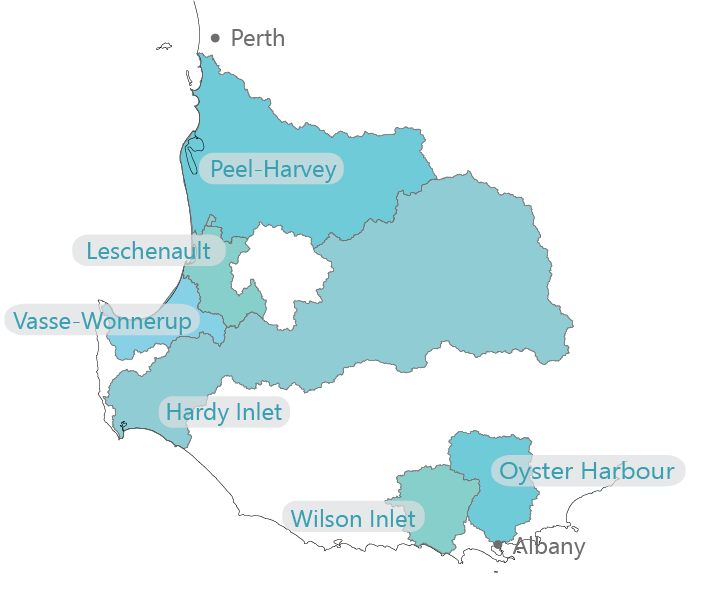Estuary monitoring and condition
Scientific monitoring of estuary condition is an important part of effectively managing our estuaries. Long-term data allows us to evaluate management actions being implemented as well as the condition and response of our estuaries to typical seasonal weather patterns, atypical events such as summer floods, and shifts in climate. Data is also integral to building hydrodynamic models.
Estuaries are monitored every two to four weeks and data is collected on each of the following parameters:
- Oxygen levels
- Salinity
- Turbidity
- Algae (measured as chlorophyll a)
- Nitrogen
- Phosphorus

Other projects
- Better collaborative drainage management
- Booiyup - Centennial Park Wetland
- Brockman Park
- Capacity building
- Catchment modelling
- Catchment monitoring and condition
- DairyCare
- Estuary modelling
- Fencing and revegetation
- Fertiliser management program
- Investment planning for catchment actions
- Phosphorus binding clay
- River health assessments
- Seagrass monitoring
- Soil amendments
- Soil Wise
- uPtake
- Urban garden fertiliser use in Leschenault Catchment
- Yakamia Creek
- Z-Filter trial

